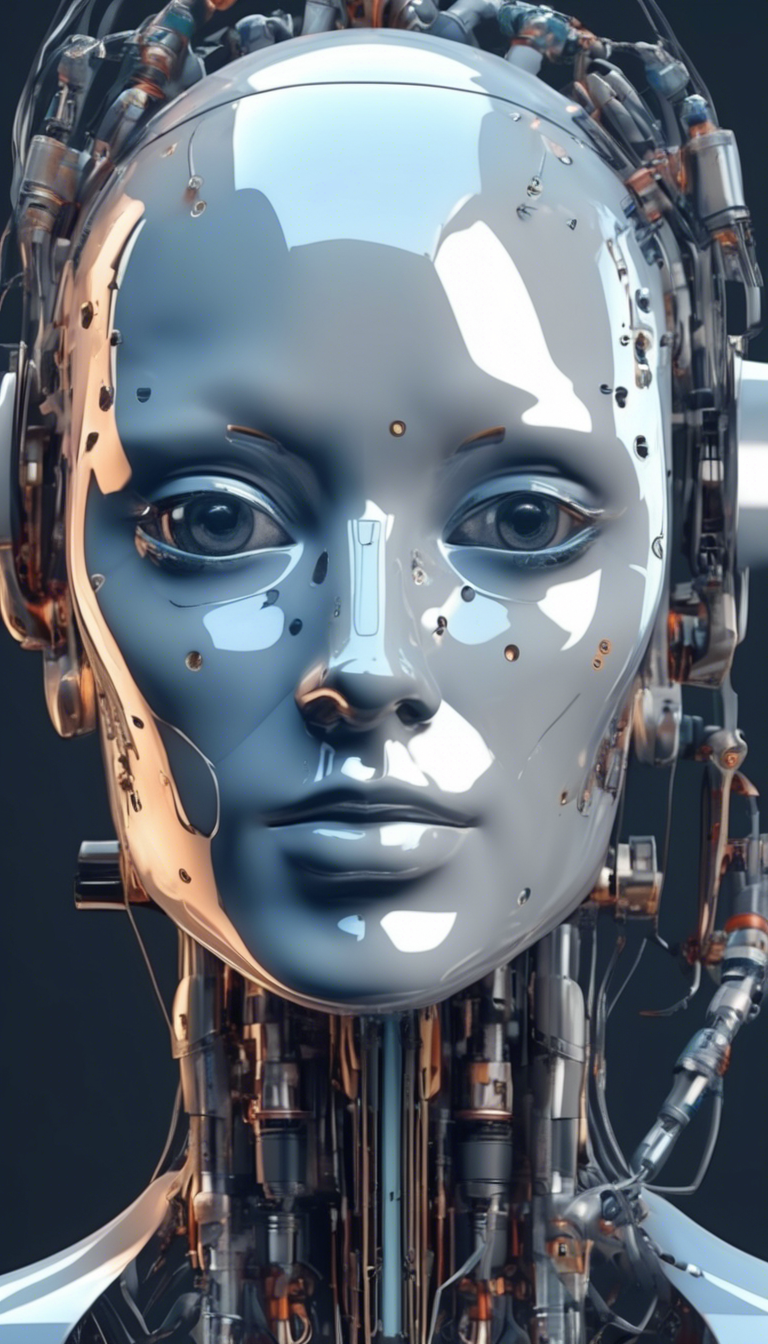The Impact of AI Automation on Modern Work Environments
Today, the workplace is undergoing a significant transformation, thanks in large part to advancements in artificial intelligence (AI) and automation. As businesses increasingly adopt these technologies, it’s essential to understand how AI automation influences various aspects of modern work environments. From enhancing productivity to redefining roles, the impact is profound.
AI automation streamlines repetitive tasks, allowing employees to focus on more strategic work. This shift leads to increased efficiency and productivity. For instance, routine data entry and processing are often handled by AI systems, freeing team members to engage in creative problem-solving and innovation. Employees can leverage AI tools to analyze data more effectively, leading to better decision-making.
One of the most notable effects of AI automation is the transformation of job roles. Traditionally, many positions required manual oversight of tasks that AI can now execute with greater speed and accuracy. This change forces organizations to rethink their workforce structure, often resulting in the creation of new roles centered around managing and overseeing AI systems. For example:
- Data Analysts: As AI generates vast datasets, the demand for professionals who can interpret this data is rising.
- AI Trainers: There is a growing need for individuals who can train AI systems to recognize patterns and make decisions.
- Ethics Consultants: With the rise of AI, companies need experts who ensure that their systems operate within ethical guidelines.
However, the transition to AI automation raises valid concerns about job displacement. Many fear that machines will replace human workers, leading to unemployment in various sectors. While it’s true that certain jobs may become obsolete, it’s crucial to underscore that AI technology can also create new employment opportunities. The key lies in reskilling and upskilling the workforce to adapt to the evolving landscape.
Moreover, the integration of AI automation into the workplace fosters collaboration between humans and machines. For example, AI can assist in customer service through chatbots, which handle preliminary inquiries. This setup enables human agents to concentrate on more complex customer needs. As a result, organizations can provide enhanced service without cornering their staff with mundane tasks.
AI automation doesn’t just impact employees; it also significantly enhances productivity at the organizational level. Companies that embrace these technologies often experience improved workflow efficiency. Automated systems can handle mundane administrative tasks, allowing for faster project turnaround times and more effective team collaboration. By utilizing AI for project management, for instance, organizations can better track progress and optimize resource allocation.
The embrace of AI automation encourages a culture of innovation. With AI managing routine procedures, employees have more time to explore creative solutions and engage in brainstorming sessions. This cultural shift can lead to groundbreaking ideas and improved business solutions that might otherwise not come to fruition. As organizations cultivate innovative mindsets, they position themselves competitively in the marketplace.
Furthermore, as businesses integrate AI tools, they gain valuable insights into operational efficiency. AI facilitates data analysis like never before, enabling companies to identify trends and inefficiencies rapidly. This information is crucial for making informed decisions and strategizing for future growth. By augmented analytics, businesses can not only react to current market conditions but also anticipate changes and prepare accordingly.
The adoption of AI automation also fosters a more agile work environment. Remote work has surged in recent years, and AI tools play a pivotal role in facilitating collaboration among distributed teams. With automation, team members can communicate effectively, share files instantly, and manage projects from different locations seamlessly. AI’s ability to streamline communication enhances teamwork, creating a virtual space where productivity can thrive.
The impact of AI automation on modern work environments is both profound and multifaceted. It presents new opportunities while challenging existing norms. As organizations navigate this transition, they must prioritize reskilling their workforce and fostering an innovative culture that embraces these technologies. The future of work will undoubtedly be shaped by AI automation, making it vital for businesses to adapt and thrive in this new digital age.
Key Technologies Driving AI Automation Innovations
In a world where technology evolves at an unprecedented pace, AI automation stands out as a transformative force that reshapes industries and enhances productivity. Several key technologies are driving this innovation, enabling businesses to streamline operations, reduce costs, and unlock new possibilities.
Machine Learning
Machine learning is a cornerstone of AI automation. It empowers systems to learn from data and improve over time without being explicitly programmed. By using algorithms that analyze patterns within large datasets, machine learning enables organizations to make predictions, identify trends, and automate decision-making processes. Industries like finance and healthcare have harnessed machine learning to revolutionize risk assessment, fraud detection, and patient care.
Natural Language Processing (NLP)
NLP allows machines to understand, interpret, and respond to human language in a valuable way. By bridging the gap between human communication and computer understanding, NLP facilitates automated customer support through chatbots and virtual assistants. Organizations can enhance customer satisfaction by providing instant responses, helping resolve issues quickly, and delivering personalized experiences. The application of NLP is evident in platforms like Google Assistant and Amazon Alexa.
Robotic Process Automation (RPA)
Robotic Process Automation focuses on automating repetitive and rule-based tasks. This technology effectively mimics human actions to perform tasks across various systems and applications, freeing workers from mundane responsibilities and allowing them to focus on higher-value activities. Businesses across sectors are implementing RPA to streamline processes, such as data entry, invoicing, and payroll, leading to significant improvements in efficiency and accuracy.
Computer Vision
Computer vision aims to enable machines to interpret and understand visual data from the world. By analyzing images and videos, this technology finds applications in industries such as manufacturing, healthcare, and autonomous vehicles. For example, in manufacturing, computer vision systems inspect products for defects in real time, thus reducing human error and enhancing quality control. Autonomous vehicles rely on computer vision to navigate and recognize obstacles, contributing to safer road environments.
Internet of Things (IoT)
The Internet of Things connects everyday devices to the internet, allowing them to collect and exchange data. This connectivity plays a crucial role in AI automation. IoT devices can monitor performance, gather environmental data, and trigger automated responses based on predefined conditions. For instance, smart thermostats adjust settings automatically based on user behavior, while industrial IoT sensors can predict machinery failures, enabling proactive maintenance.
Cloud Computing
Cloud computing is vital to AI automation’s scalability and accessibility. By storing large datasets and leveraging powerful computing resources over the internet, cloud solutions support AI workloads, making it easier for organizations to implement complex algorithms without needing extensive hardware investments. This flexibility enables businesses of all sizes to harness AI automation, driving innovation in various fields—from finance to retail.
Data Analytics
Data analytics underpins AI automation by turning raw data into actionable insights. Advanced analytics tools utilize statistical methods and machine learning algorithms to help organizations understand trends, make informed choices, and optimize strategies. Businesses analyze customer behavior data, market trends, and operational effectiveness to streamline processes and increase competitiveness.
Key Benefits of AI Automation Technologies
- Increased Efficiency: Automating processes reduces the time required for repetitive tasks, allowing employees to focus on more strategic initiatives.
- Enhanced Accuracy: Reducing human intervention minimizes errors, leading to more reliable results and improved quality.
- Scalability: Cloud computing and IoT provide the resources necessary to scale AI automation solutions according to demand.
- Cost Savings: By streamlining operations and minimizing labor costs, businesses can realize significant savings.
- Improved Decision-Making: With access to real-time data and predictive analytics, organizations can make data-driven decisions more effectively.
By leveraging these key technologies, organizations are not only driving AI automation innovations but also creating a future where efficiency and adaptability are paramount. As these technologies continue to advance, the potential for automation will expand, providing even greater opportunities for businesses to thrive in an increasingly competitive landscape.
Conclusion
As we reflect on the profound influence of AI automation on contemporary work environments, it becomes increasingly clear that this technology is not merely an addition to existing processes; it is reshaping how we think about work itself. The impact of AI automation extends far beyond efficiency improvements. It alters job roles, shifts workforce dynamics, and transforms entire industries by streamlining operations, enhancing decision-making, and ultimately driving profitability. In this evolving landscape, employees are witnessing a shift from routine, repetitive tasks to more complex, creative endeavors that require human intelligence, emotional understanding, and innovative thinking.
One of the most exciting aspects of AI automation is its ability to empower workers rather than replace them. Employees are now finding themselves with more time to focus on strategic and high-value activities. This transition fosters a more engaging and fulfilling work environment where individuals can leverage their unique skills and creativity. While traditional roles may be phased out, new opportunities arise as companies demand expertise in collaboration with AI tools, creating a hybrid workforce that unites human intuition with automated processes.
Key technologies are driving these innovative shifts in AI automation. Among them, machine learning continues to lead the pack by enabling systems to learn from data and improve over time without direct human intervention. From predictive analytics to natural language processing, machine learning opens up new avenues for businesses to enhance customer experiences, drive efficiencies, and make data-driven decisions that were previously unimaginable. Businesses that adapt to these technologies not only stay competitive in an overcrowded marketplace but also position themselves for future success.
Robotic Process Automation (RPA) is another technology that plays a crucial role in the automation landscape. By replicating repetitive tasks typically performed by humans, RPA allows organizations to cut costs, reduce errors, and increase productivity. This technology frees up human resources, enabling employees to engage in more intellectually stimulating work. As organizations adopt RPA solutions, they discover the power of integrating intelligent automation into their daily operations, greatly enhancing their agility and response time.
Moreover, the convergence of AI with IoT (Internet of Things) devices is generating even more possibilities. Smart sensors and connected devices provide businesses with real-time data about their operations, enabling AI systems to analyze this information efficiently and autonomously. The result is a continuous loop of improvement, where machine learning algorithms can refine processes and predict potential issues before they arise, greatly enhancing decision-making capabilities.
However, with these opportunities come challenges that require careful consideration. Businesses need to ensure that they are equipped with the right skills and education, empowering their workforce to work alongside these new technologies. Creating a culture that values continuous learning and adaptability will be essential to harness the full potential of AI automation. While technology is evolving rapidly, the human element remains crucial; organizations that prioritize employee training and development will likely thrive in this new landscape.
The ethical implications of AI automation also cannot be ignored. Data privacy, security, and bias present critical concerns that require vigilant attention. As AI capabilities expand, it’s vital for organizations to establish robust governance frameworks to ensure ethical practices. By doing so, they can foster trust among stakeholders, including employees, customers, and society at large.
As we navigate this complex terrain, it is evident that the future of work will be defined by collaboration between humans and machines. Embracing AI automation allows businesses to thrive in an ever-changing market while enhancing employee experience and transforming customer engagement. By leveraging the right mix of AI technologies, organizations stand to benefit immensely, but only if they prioritize a human-centric approach that values creativity, ethics, and continuous growth.
AI automation is not just a technological evolution; it is a transformative force that invites us to reimagine how we work, innovate, and interact with each other. Organizations willing to adapt and evolve alongside these advancements can turn challenges into opportunities, ensuring that both people and technology thrive together in the workplace of tomorrow.


